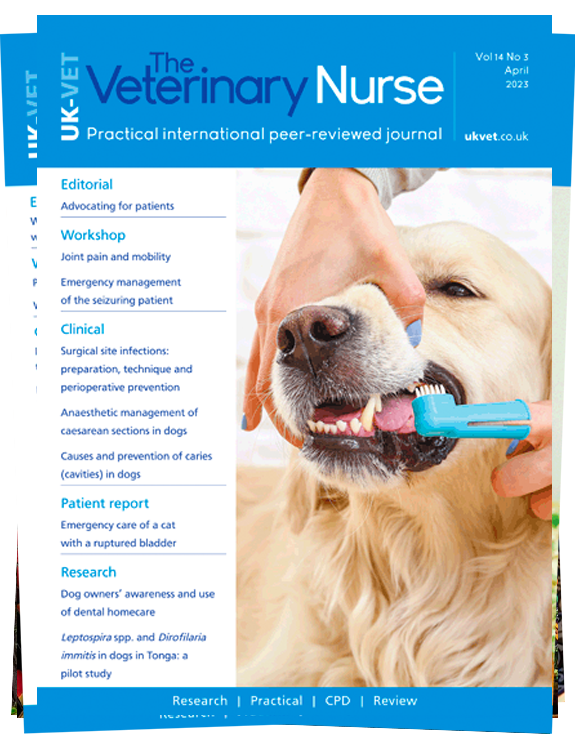The Veterinary Nurse is the leading peer-reviewed journal for veterinary nurses. It provides an evidence base for clinical practice and a platform for continuing professional development, helping readers enhance their skills and improve patient outcomes.

Our reflective modules are drawn from our clinical archive and include certification, to test your knowledge and fulfil your CPD requirements.
The Veterinary Nurse – part of the UK-VET group – is published 10 times per year, and provides an archive of back issues dating back to 2010.
Sign up to The Veterinary Nurse's regular newsletters and keep up-to-date with the latest peer-reviewed content and CPD that we publish.
Complete your required CPD activity with our reflective platform
Access our full range of content and never miss an issue
The Veterinary Nurse supports vet nurses by sharing expertise and advice to help you build confidence, grow professionally and improve care.
Evidence-based best practice
Practical guidance
Peer-reviewed research
CPD support